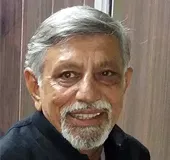-
CENTRES
Progammes & Centres
Location

The armed forces for once are facing a shortfall of funds impacting every sphere of their activity, whether it be stocking of critical ammunition, upgrading military capabilities or the raising of the mountain strike corps. Maintaining a modern military is essential as also is internal development and provision for social projects within the country, the constant ‘bread versus butter battle’. This message was amply conveyed by the government in this budget. It implied cut down wasteful expenditure or be responsible for shortcomings for your own manpower and capabilities.
The army has woken up and is now contemplating measures to overcome shortfall of funds. It is now being forced to think of rightsizing, reducing echelons and creating forces from within its own resources. It has been forced to consider alternate means to create funds for procuring critical ammunition.
There are multiple aspects to a reduced defence budget which indirectly impacts the armed forces and needs to be considered in totality by the government. The most impacted service of a reduced budget is the army, which needs to enhance force levels, as the raising of the mountain corps indicates, modernize its forces while simultaneously cater for rising pensions, as its members retire earlier.
The army is working tirelessly to cut down costs. It has ordered a study to evaluate service conditions for its soldiers by looking at options of enhancing retirement ages by five years.
This would have multiple advantages. First, it would reduce the pension budget, second it would continue with trained and motivated soldiers for a longer duration while finally helping soldiers to overcome family liabilities for an additional period. The major disadvantage would be an increase in average ages of the fighting echelon.
It has also ordered a study to evaluate reducing various echelons to cater for raising of new units for the mountain strike corps and enhancing funds essential for modernisation from within its own resources. This has evolved from the realisation that the enhancement in the defence budget is unlikely in the coming years. Most importantly, despite all promises, no contribution can be expected from the Ministry of Defence (MoD).
There are many organisations which form part of the MoD, which are more than redundant in the present age and whose closure could contribute to the availability of funds for the armed forces and could also lead to a further reduction in the defence budget. While military farms are under closure, the Military Engineering Service (MES) is another mammoth organisation which should follow the same pattern. Outsourcing the services rendered by this organisation would drastically reduce costs and provide better services and facilities.
The other is the Director General of Defence Estates, a service termed by the Comptroller General for Defence Accounts (CGDA), another MoD controlled organisation, as the most corrupt service in India. As far back as 2010, it was recommended that this organisation may be closed and its specialist personnel transferred to the Army headquarters. Former Defence Minister A.K. Anthony too had threatened to close this service, but nothing moved. It continues to perform similarly, has been responsible for piling over of 13,000 land cases in courts, which would cost the exchequer over Rs 5000 crore to settle. The MoD must revisit the recommendations of the CGDA and come to a decision.
The next which should be on the chopping block are redundant ordinance factories. Those manufacturing clothing and other material readily available in the open market need to be shut, their premises sold, and money transferred to the exchequer. Maintaining them remains a drain on the MoD budget. Similarly, with the opening of defence production and R & D to the private sector, does the government still need to maintain over 30 laboratories at exorbitant cost. Only those essential for specialist research need to continue and be funded.
Reorganisation at the apex level of the armed forces resulting in the appointment of a Chief of Defence Staff (CDS) and creation of theatre commands would enhance the functioning of the armed forces as also reduce some common aspects like amalgamation of individual supply chains and controlling HQs. It would impact the budget as requirements would be amalgamated and redundancies removed. Many logistic echelons and storing agencies could be brought together, cutting costs. By creating the Defence Planning Committee under the National Security Advisor, the government has all but written of this decision.
The government is aware that the mountain strike corps, which was sanctioned years ago, was aimed at creating a strike capability into Tibet, which India desperately lacks at present. It would also be a deterrent to China in case of misadventures. Its firepower was already in the process of being enhanced.
Forcing the army to delay plans for its raising has left the army with only a defensive capability against China, removing its offensive component. Yet, the MoD has not even attempted to consider options which could assist the army in raising the same.
For a nation facing multiple challenges in national security and two nuclear armed neighbours, who despite all-out reach by the Indian government still claim Indian territory, enhancing capabilities is essential. Possibly there is no other nation in the world facing such a hostile environment.
The raising of military capabilities must be an ‘all of government approach’, not leaving a service to handle its own shortcomings. Yet, all the government does is make promises, without seriously fulfilling any.
The views expressed above belong to the author(s). ORF research and analyses now available on Telegram! Click here to access our curated content — blogs, longforms and interviews.

An alumnus of the National Defence Academy Major General Harsha Kakar is a graduate of the DSSC LDMC and the National Securities Studies Course at ...
Read More +